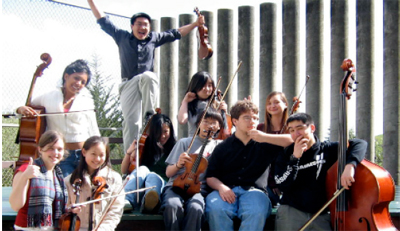
Seems like only yesterday we reported that Matthew Cmiel, one of our favorite boy wonders, had put together a new band called Formerly Known as Classical. (Actually, it March 15, 2006, but let’s not quibble.) Looks like the group has done okay since last we checked in; on Sunday, August 5, they’re appearing in a concert at the Cabrillo Music Festival with Marin Alsop, the conductor and music director of the Baltimore Symphony and recent MacArthur Prize winner.
Matthew–now a sobering 18-years-old–will conduct the group in Osvaldo Golijov’s Last Round, an exciting piece of music which gets its title from a story about boxing by Julio Cortazar and is an homage to Astor Piazzolla the late master of neuvo tango.
Then, recent Juilliard graduate, cellist Drew Ford and San Francisco Symphony Youth Orchestra pianist Preben Antonsen will play Matthew’s piece Macho, Cool and Dangerous, which was inspired by the music of Golijov and Piazzolla.
The concert is Sunday, August 5 at 8:00 PM in the Sant Cruz Civic Auditorium, 307 Church Street, Santa Cruz. If you’re in the neighborhood, write us a review.
Hey, the Steve Layton Songbook is coming along nicely. Check out Prufrock (T.S. Eliot) 2007.

 From today’s
From today’s  Surprisingly good news for all those who still harbor hopes of major orchestras as dynamic, living institutions: the New York Philharmonic has just
Surprisingly good news for all those who still harbor hopes of major orchestras as dynamic, living institutions: the New York Philharmonic has just